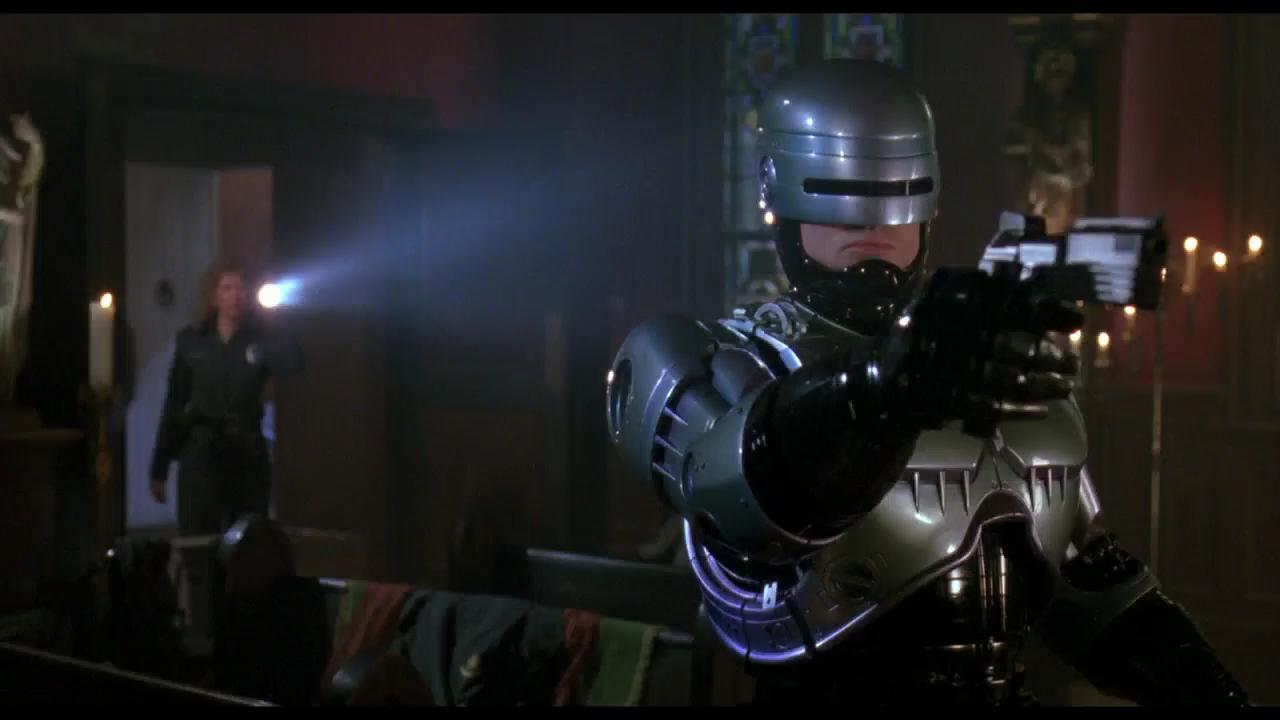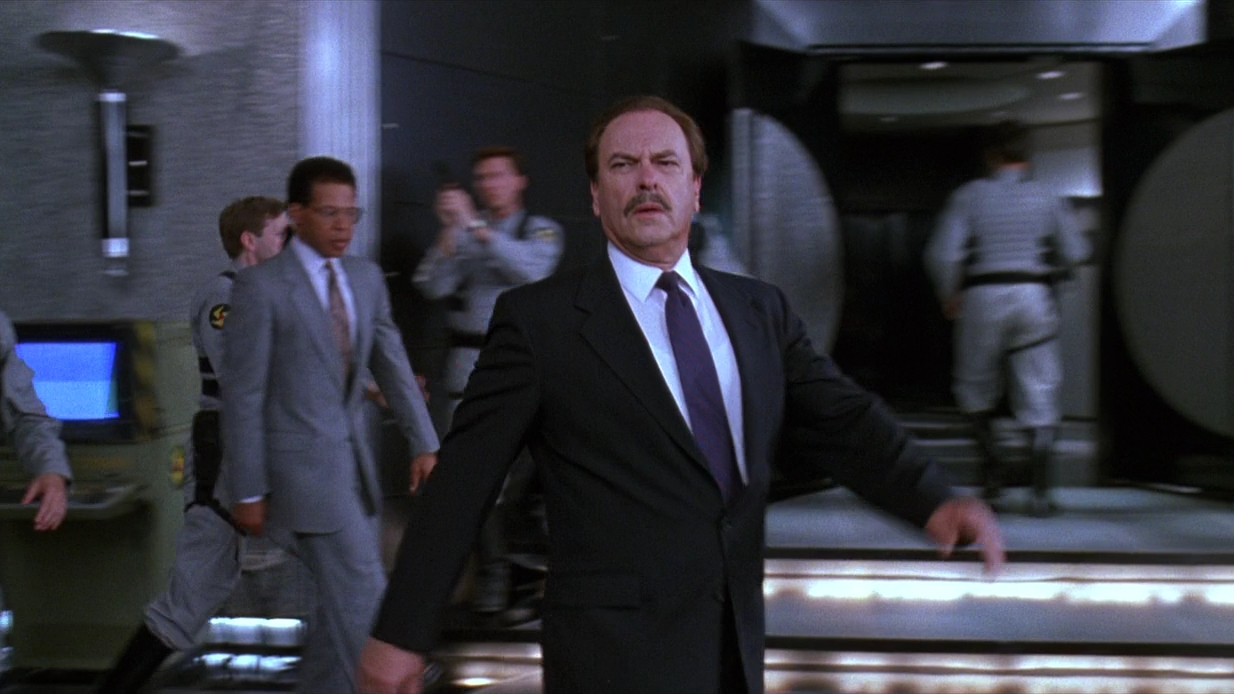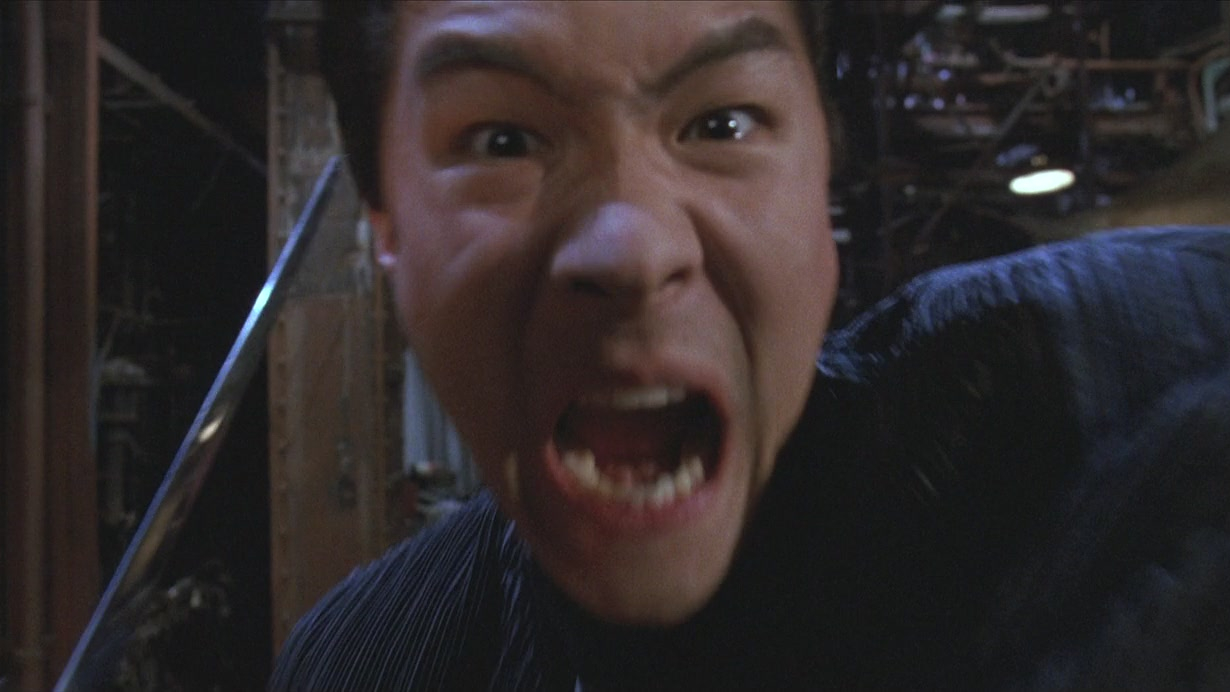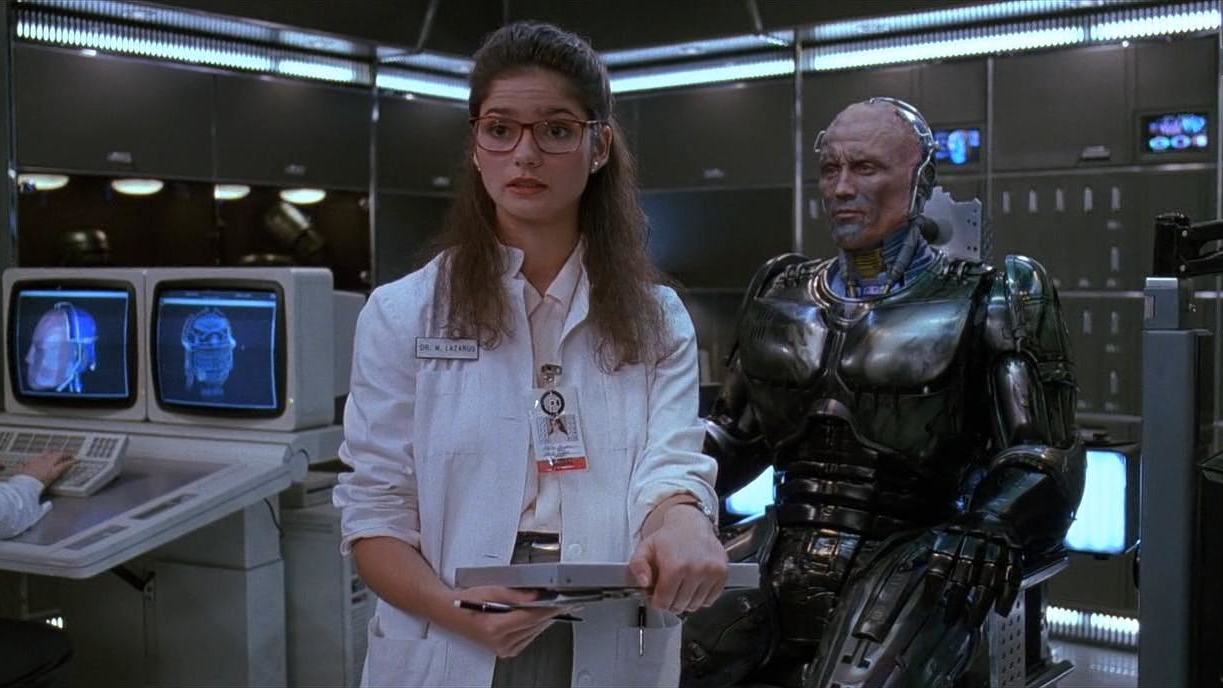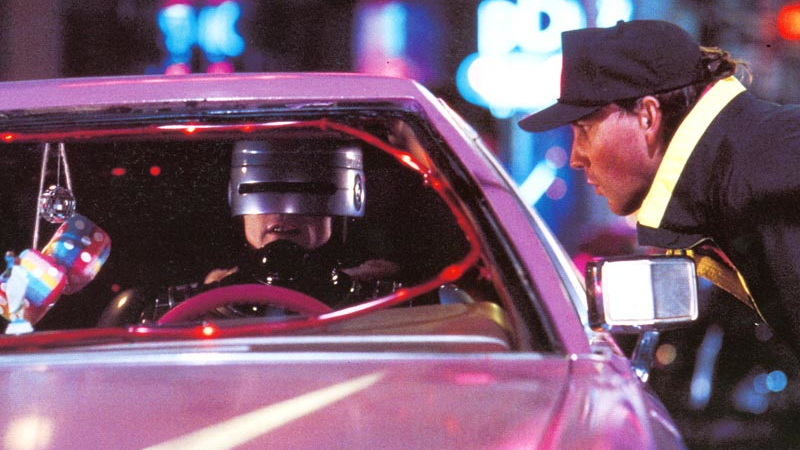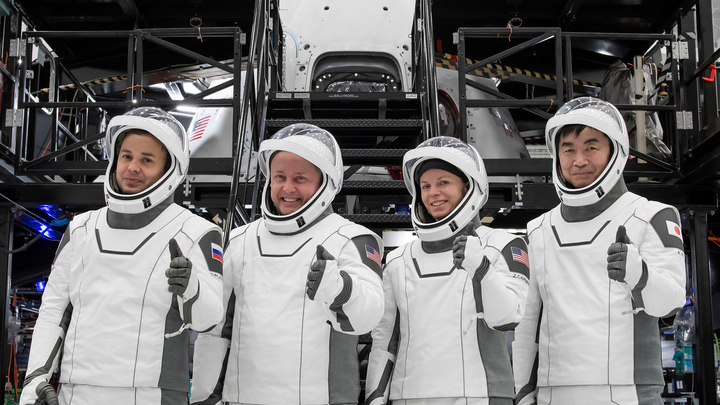30 years on, Robocop 3 still sucks
Nostalgia is a hell of a drug, but even it can't make us love RoboCop 3.

Ninja robots and a jetpack, that’s how everyone tries to defend this movie – but even with those, it’s still awful.
That may seem harsh at first, but RoboCop 3 really was an absolute dumpster fire of a movie. It did nothing but hurt the franchise, ruined the director’s career, upset the fan base, and provided the weakest earnings in franchise history. It isn’t the worst movie ever made – there is some solid directing, decent actors, as well as a few inspired ideas, but the overall project still has an undying stink on it. There’s no one person to blame for Officer Alex Murphy’s downfall, but rather a comedy of errors. and poor decisions.
RoboCop was hugely popular with kids and young adults, you know, the demographic that shouldn’t have been watching the first two R-rated movies. This hadn’t gotten past the executives at Orion Pictures, however, and we soon saw a massive toy line and even a cartoon in 1988 for the character (followed by RoboCop: Alpha Commando later in 1998). Thus the decision was made to take RoboCop 3 in a PG-13 direction. If the attempt at cross-promotion synergy is hard to believe, the phrase, “Orion presents the next RoboCop adventure in 1992, for all age groups,” even appeared on the back of the box for RoboCop 2’s Game Boy version.
That was the first issue, a new direction for a softer, gentler cyborg which was strangely similar to a part of RoboCop 2’s plot. This new movie wouldn’t have the same satirical bite or rough nature about it, and certainly not the violence. In some ways it was showing the future of the franchise, resembling the upcoming made-for-tv offerings.
We had the introduction of Nikko Halloran (Remy Ryan), a young genius hacker who makes many of the bad guys look like chumps. She was the perfect avatar for the new audience the studio was hoping to court and a problem for many viewers. It’s Nikko who saves the day in the end, when Robo has trouble fighting off the two ninja cyborgs as she simply makes them cut each other’s heads off, taking the wind out of Murphy’s sails at the same time.
The next big problem is the antagonists. The first two films had wonderful villains who outdid themselves, while RoboCop 3 feels like it attempted to spread out the role and no one looked good in the process.
Rip Torn (Men in Black, Freddy Got Fingered) stars as The CEO, the boisterous new head of Omni Consumer Products (OCP), and he’s nowhere near as cunning or charming as his predecessor. His company is in danger, stocks are down, and now the controlling shares are owned by the Kanemitsu Corporation. The head of Kanemitsu is portrayed by Mako (Conan the Barbarian, TMNT) and it’s a shame he wasn’t given more screen time, as this character seems way more interesting.
Breaking space news, the latest updates on rocket launches, skywatching events and more!
By the end, however, Torn’s CEO is being ordered around by Paul McDaggett, leader of the Rehabs, played by John Castle (Man of La Mancha). He’s the stereotypical English bad guy who we hate because of his uptight nature and accent, leading a group of militant thugs who are picking on the weak. This bully is an undercooked Bond villain with little to chew on in the script sadly. Felton Perry returned as Johnson, an OCP member who appears in all three films, and it would have been wonderful to see him have a bigger role too, giving him more of an arc.
Then there’s the aforementioned ninja. Look, we all love ninjas, but this wasn’t a great fit for RoboCop. He’s called Otomo (named after Katsuhiro Otomo, the creator of Akira) and the actor who played him, Bruce Locke, was hired mostly for his intimidating and action figure-esque look. The android enforcer for the bad guys feels a bit generic and disposable.
It’d be easier to excuse his stereotypical traits if his presentation didn’t feel lazy and his imposing qualities hadn’t vanished so quickly. As it is, most only remember him for the crooked jaw and laughably disfigured face. We also see a cameo from ED-209, but it’s sad, so the less said about that the better.
On the protagonist side we have some solid actors like CCH Pounder and Daniel Von Bargen coming in to help a few returning names. With all the time being spent on these new faces it’s no surprise viewers were asking “where’s RoboCop?” It takes him a while to show up and when he does, it’s ridiculously over the top. Murphy drives up to the top of a car lot to make a pointless entrance and then shoots his way out of the roof of his patrol car when the door would have been perfectly fine.
Kids probably thought it was great, but it didn’t take long for fans to realize that it wasn’t the old Robo they knew and loved. Peter Weller, the original actor, had other obligations (a film called Naked Lunch), so Robert Burke was brought in to fill the metal boots. He isn’t bad, but it’s just not the same. To give the man his credit, he tried and was even using one of Weller’s old suits from RoboCop 2 to help the budget, but the two aren’t the same exact size and he was in pain for most of the shoot.
There’s also the addition of Dr. Marie Lazarus (Jill Hennessy). The name is pretty on the nose, though it’s smarter than you might give it credit for – it also alludes to the poet Emma Lazarus, whose work is paraphrased in the character’s third act speech, referencing the poor and huddled masses. Her character is quite one-dimensional and doesn’t get much to do beyond a bizarre titillating appearance in one of Murphy’s dreams.
Meanwhile, Anne Lewis (Nancy Allen), Alex Murphy’s partner in all three movies, only makes a brief appearance. Allen apparently didn’t have a great time working on RoboCop 2 and there were rumors that she asked to be killed off early in the third installment. However, the actress was apparently upset when she found out about the death. To have such a great character go out so early feels off and it was something that didn’t sit well with most fans. If she needs to go for the story, make it meaningful at least, and don’t have the main theme blasting before viewers can even process what happened. Having RoboCop say “Officer down” probably looked better on paper than how it actually turned out.
Lewis’s death isn’t the most depressing thing in RoboCop 3 though, that honor goes to the stunted action scenes. Burke couldn’t move well in the suit and RoboCop is mostly seen falling down or shooting around people. Locke was given a few weeks of training to try and make Otomo look vicious and deadly on screen, but everything comes across as uncoordinated and messy. It’s easy to get the idea of putting the slow-moving, hulkish, cowboy-like hero against a skilled, samurai sword-wielding, robot-ninja with nimble footwork, but the conflicting styles clash in the wrong way, leaving both characters looking inept.
The director, Fred Dekker, knew something wasn’t right and wanted to shoot more action scenes. He had thought about bringing in additional stunt teams and some Hong Kong action movie aesthetics, but that wasn’t in the budget. The only standout scene is the car chase where RoboCop commandeers a pimp’s pink Lincoln Continental, which gives us a fantastic visual if nothing else.
A lot of the gags feel out of place and fall flat. The parody commercials make a comeback, but they just feel like they’re included out of obligation, rather than because they have some cutting insight or social commentary. The best jokes are the guy jumping out the window while his wife tries to tell him things will be okay and the opening bit in the donut shop.
The sad thing is that RoboCop 3 showed a lot of potential. The core of the story is about corporate greed and class warfare, with OCP trying to forcibly evict and even kill citizens of Detroit to build Delta City. It’s basically extreme gentrification and there’s a lot you can do with that. Instead, it chooses to say very little, wading around in the shallow moral waters of “killing people is bad”.
The original script was similar in many ways, but much darker and violent. Writer Frank Miller took some of his unused ideas from RoboCop 2 and crafted a story that still involved the resistance, but did more with OCP and his own doctor character. It was a RoboCop love story, in the best way possible, and it was turned into a comic book eventually. Dekker was told to re-write the script to meet the new PG-13 rating, although even he was unable to make it work.
Robocop 3 has a lot of issues, to be sure, but it’s not entirely without merit. There is some great cinematography, the Splatterpunks of Splatterville are fun for a while, and the soundtrack is top-notch thanks to the return of the original composer, Basil Poledouris. However, it says a lot that the best scenes in RoboCop 3 are the flashbacks to the first movie, because none of the new stuff landed.
This is the RoboCop mom said we had at home, a tacky and slightly goofy version of the iconic hero. The franchise never fully recovered from this mess of a movie and 30 years later not even the rose-tinted spectacles of nostalgia can save RoboCop 3.

Stephen Wilds is a freelance entertainment writer whose work you'll see pop up in various entities (Looper, Polygon, Coming Soon, Playboy). When he's not writing about sci-fi shows, you can usually find him struggling with commas, broken controllers, and nightmares of Borg invasions. Wilds earned a BA in English Lit, but his real education came from the Sci-Fi channel in the early morning hours when all the really bad shows aired.
